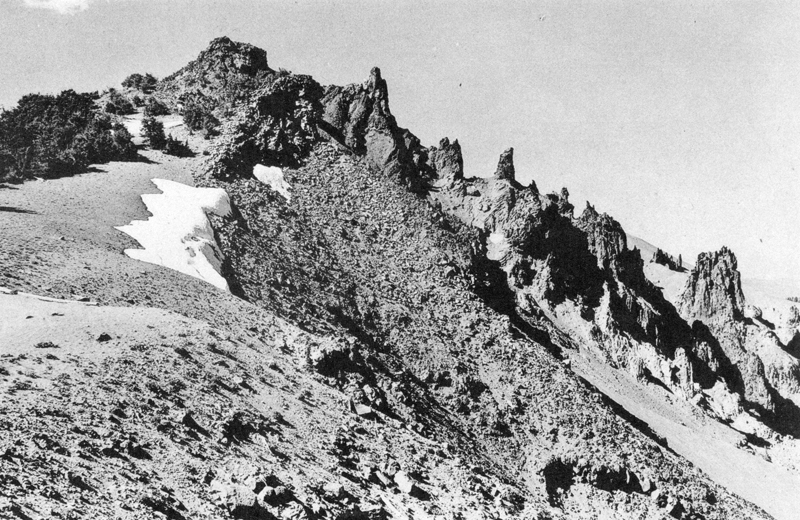The Geology of Crater Lake National Park, Oregon With a reconnaissance of the Cascade Range southward to Mount Shasta by Howell Williams
The Northern Arc of Vents
The Hillman Cone
The highest point on the caldera rim is the summit of Hillman Peak, formerly known as Glacier Peak (see plate 11, figure 2), which rises to an elevation almost 2000 feet above the waters of Crater Lake. Here, as Diller long since pointed out, the layers of lava have a decided upward curve when viewed from the lake, and suggest that the volcanic vent from which the lavas of that portion of the rim issued was not central over the lake, but much closer to the western border. This view is fully borne out by the character of the igneous material of Glacier Peak. It is composed in small part of darker slaggy andesites and much red, yellow or whitish fragmental material which is highly colored, as if by the escape of hot volcanic gases near the vent. From the lake these colored patches are brilliant in the morning light.
|
Plate 11. Fig. 2. Hillman Peak from the south. The spires on the caldera wall consist chiefly of cinders and agglomerate; the summit consists of andesite flows. The vent filling of the former Hillman Cone lies among the crags about halfway down the visible part of the caldera wall, and is mainly shadow. (Photograph by Elmer Aldrich.) |
Clearly, Hillman Peak is the remnant of a parasitic cone on the side of Mount Mazama. When the caldera was formed, the eastern half of the Hillman cone disappeared, revealing a perfect cross section through the central conduit.
In its original state the cone measured approximately 3/4 mile across, and it rose to a height of perhaps 1000 feet above the adjacent slopes of Mount Mazama. The lower half of the cone is composed of dark-gray and black “cinders” and scoriaceous tuff breccias (plate 29). The upper part, on the contrary, is made up of dark flows of andesite interbedded with coarse breccias. Much of the lava is kaolinized and propylitized, and some of the fissures are coated with opal and hematite.


